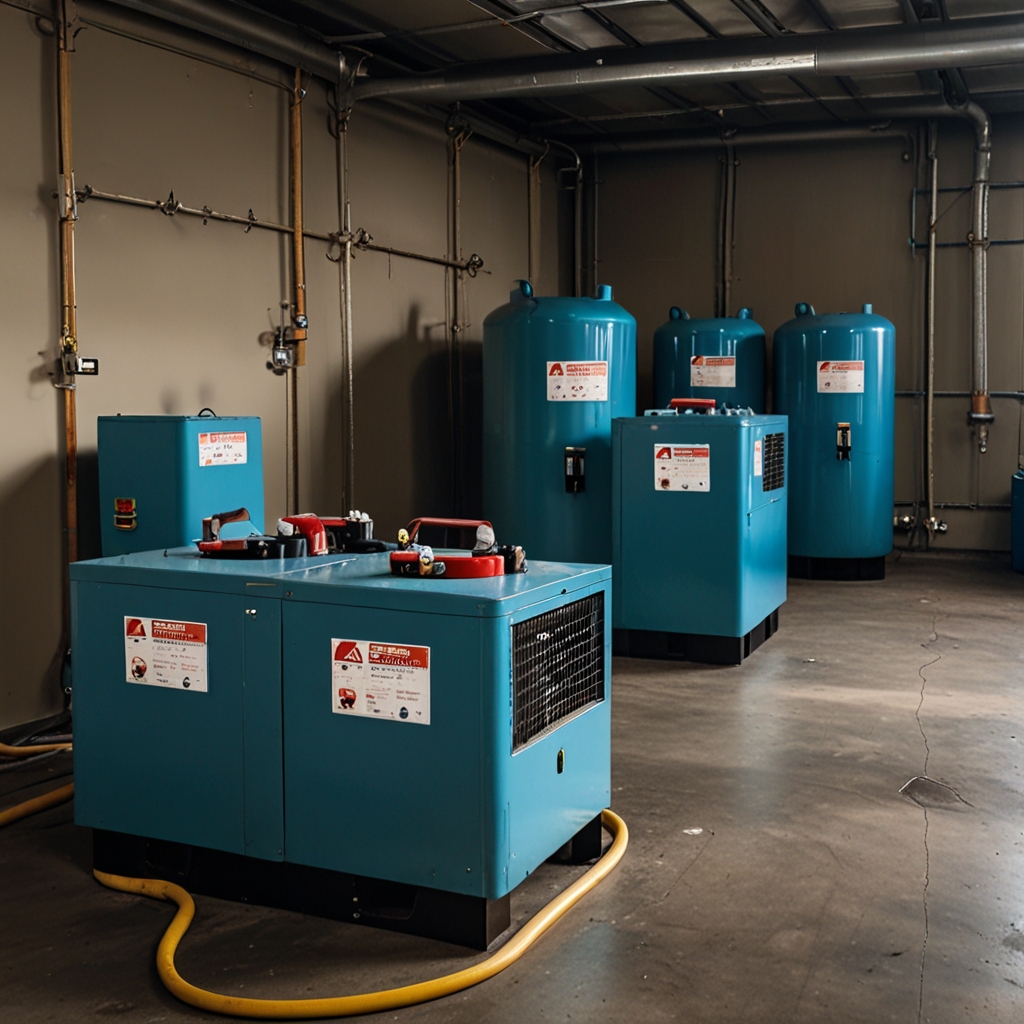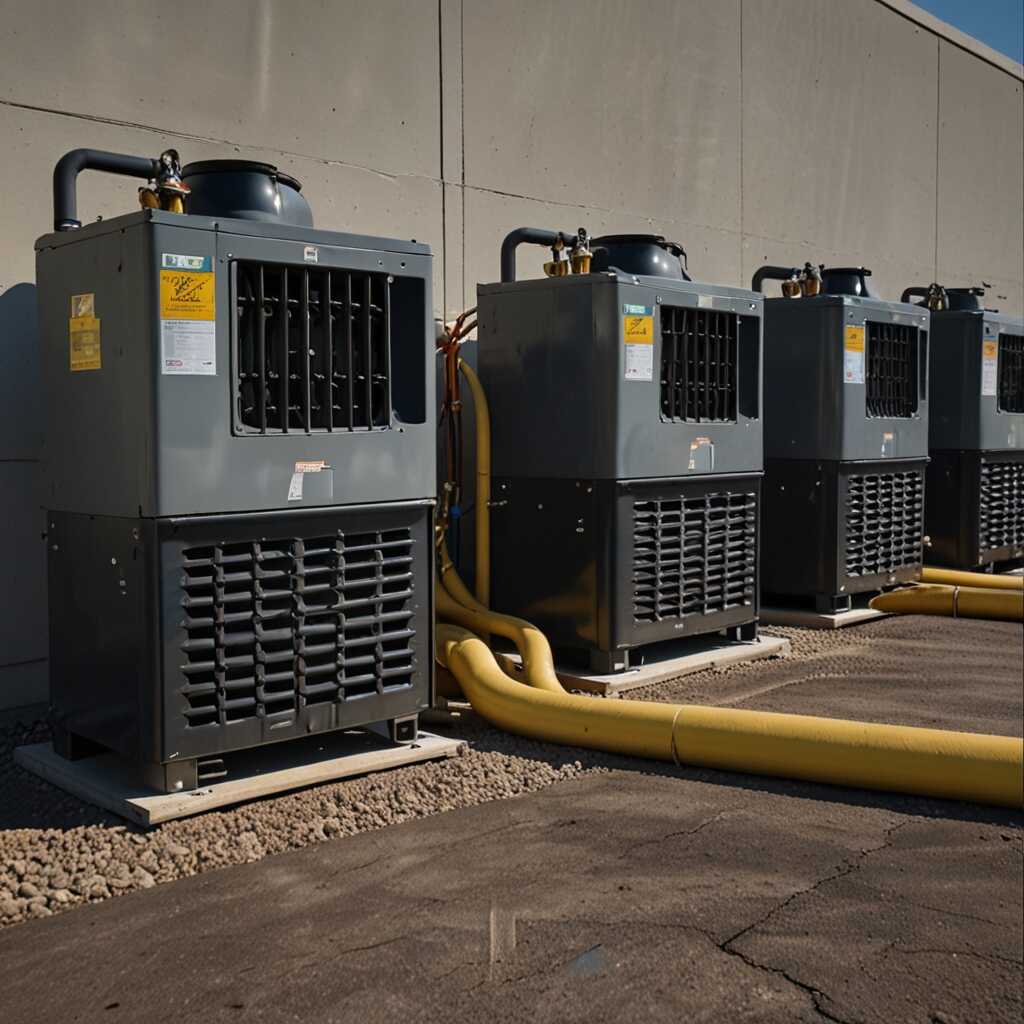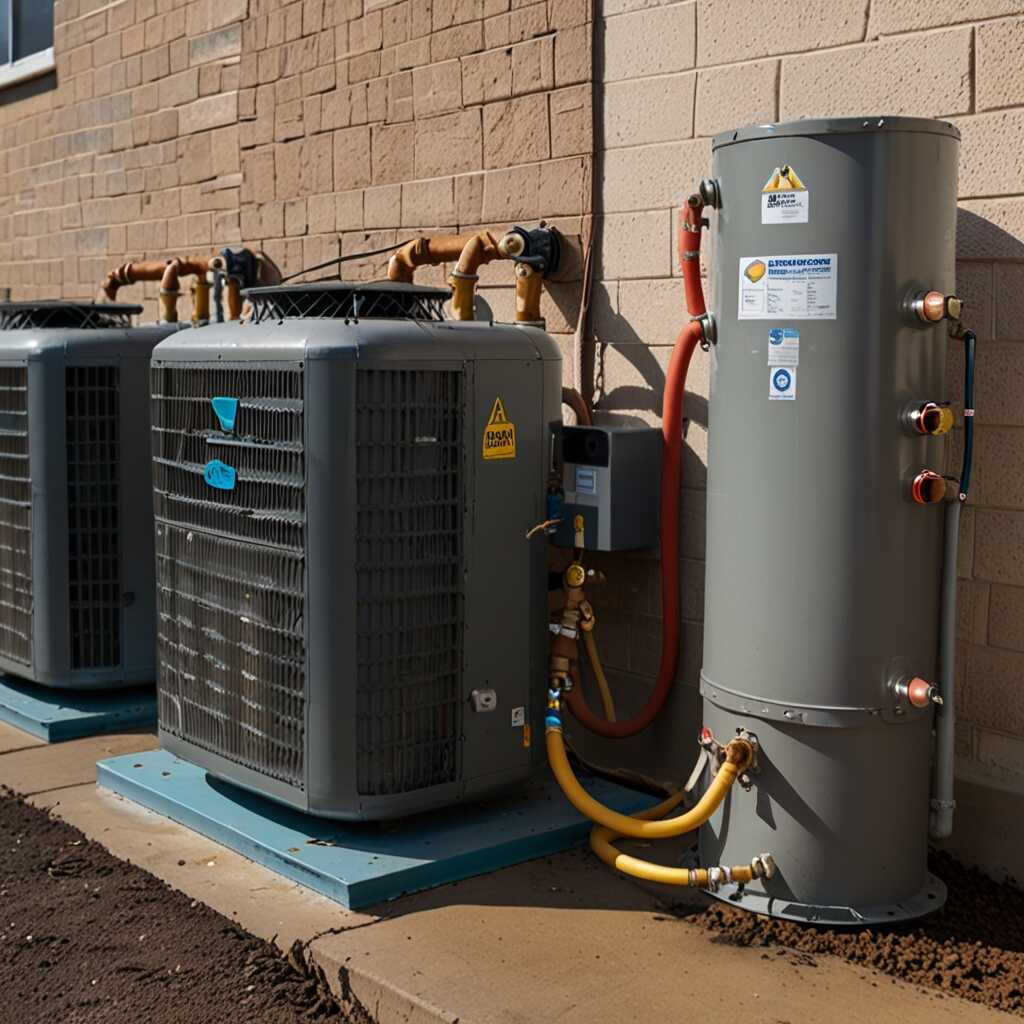Enhancing refrigerant recovery speed and efficiency with microprocessor controls can significantly improve HVAC operations. These advanced systems optimize the recovery process, allowing technicians to work faster and more effectively. Refrigerant Recovery Pro offers expert guidance on these technologies, helping professionals understand best practices and equipment options. By leveraging microprocessor controls, HVAC technicians can enhance their recovery methods, ensuring compliance and efficiency in all operations.
Understanding Microprocessor Technology in Refrigerant Recovery
Microprocessor technology in refrigerant recovery systems serves as the brain of the operation. Key components include sensors, controls, and communication modules. Microprocessors enable precise monitoring and management of the recovery process, helping to enhance efficiency significantly. Compared to traditional refrigerant recovery methods, systems controlled by microprocessors improve recovery speed by utilizing real-time data to optimize performance. Studies show these systems can achieve speeds approximately 20% faster than older models, making them a smart choice for HVAC professionals looking to increase productivity and reliability.
Key Features of Microprocessor-Controlled Recovery Systems
Microprocessor-controlled recovery systems include essential features designed for optimal performance. The sensors continuously monitor refrigerant pressures and temperatures, ensuring accurate readings. Automated control sequences adjust the recovery process for maximum efficiency, reducing recovery time. Some advanced models enable remote monitoring and diagnostics directly through a mobile app, enhancing user experience. These features collectively contribute to improved reliability and efficiency, making these systems an essential tool for HVAC technicians aiming for fast and effective refrigerant recovery.
Advantages of Automated Refrigerant Recovery Solutions
Automated refrigerant recovery solutions offer significant benefits. They improve accuracy while reducing human error. The use of microprocessor-controlled systems enhances efficiency in HVAC applications. These systems can monitor refrigerant levels, ensuring optimal performance. They provide accelerated recovery times compared to manual methods. Research shows recovery times can be reduced by over 50%. Equipment that integrates automation allows HVAC professionals to streamline operations. This leads to increased productivity. The right systems can also handle various refrigerants, making them versatile and reliable. These features contribute to significant time and cost savings for HVAC businesses.
Top Brands and Models for Automated Recovery Solutions
Choosing the right automated refrigerant recovery system is essential for HVAC professionals. Brands such as NAVAC and Appion are often highlighted for their reliable performance and durability. The NAVAC NRP8DI is a top choice, equipped with microprocessor controls that enhance efficiency. It features automatic shut-off and dual-stage operation for superior performance. The Appion G5TWIN is another recommended model, known for its fast recovery times and ability to handle high volumes. These systems provide essential features that improve accuracy and reliability. They are designed for HVAC applications and are proven to deliver excellent results in refrigerant recovery.

Features That Enhance Efficiency in Refrigerant Recovery Equipment
Automated monitoring in microprocessor-controlled refrigerant recovery systems significantly increases efficiency by providing real-time data, which allows technicians to react promptly to any irregularities. These systems can handle various refrigerant types with ease, adjusting parameters automatically to ensure safe and efficient recovery. Modern microprocessor-equipped equipment often improves recovery speeds by 20% or more compared to older systems, resulting in faster project completion for HVAC professionals.
Understanding Automated Monitoring and Its Benefits
Automated monitoring is a crucial feature in microprocessor-controlled refrigerant recovery systems. This technology continuously tracks operational parameters such as pressure, temperature, and flow rates. By analyzing this data, users can identify potential issues early, ensuring that recovery processes are reliable and efficient. Reliable systems provide exceptional performance, helping technicians complete jobs faster and with greater accuracy. This results in substantial cost savings and a better experience for both technicians and their clients.
Key Statistics Indicating System Performance
- Microprocessor-controlled systems can recover refrigerants up to 50% faster than traditional methods.
- Efficiency improvements can lead to up to 30% reduction in energy consumption.
- Recovery rates can exceed 2 pounds per minute.
- Modern systems can have recovery efficacy of over 95%.
- Implementing controls can reduce labor costs by up to 20%.
- Deployment of advanced systems can lead to 40% less refrigerant loss.
- Innovative technologies can cut recovery time up to 25%.

Comparative Analysis of Recovery Techniques in HVAC
This section focuses on comparing traditional refrigerant recovery techniques with microprocessor-controlled systems. Traditional techniques depend on manual controls and slower processes, making them less efficient than modern microprocessor-controlled systems. Microprocessor-controlled systems provide precise monitoring and adjustments that enhance refrigerant recovery efficiency significantly. Historical data shows these systems can reduce recovery times by up to 50%, offering greater convenience for HVAC technicians. The additional features in microprocessor systems lead to improved reliability, ultimately increasing the throughput of refrigerant recovery operations.
Enhanced Features of Microprocessor-Controlled Systems
Microprocessor-controlled refrigerant recovery systems include advanced features designed to improve overall performance. These systems offer real-time monitoring of pressure and temperature during the recovery cycle. This ensures optimal performance and enhances energy efficiency. Additionally, these controls automatically adjust recovery parameters based on refrigerant conditions, helping HVAC technicians achieve faster recovery rates. With proven reliability, microprocessor systems often deliver substantial time savings compared to traditional recovery methods. This technology allows technicians to handle a wider range of refrigerants and provides support for complex recovery scenarios.

Impact of Efficient Refrigerant Recovery on the Environment
Efficient refrigerant recovery practices play a crucial role in reducing environmental impact and ensuring regulatory compliance. These practices minimize the release of harmful refrigerants into the atmosphere, which can deplete the ozone layer and contribute to global warming. By adhering to best practices in refrigerant management, HVAC technicians can enhance the efficiency of recovery systems, thereby supporting sustainability. Proper recovery techniques also help businesses comply with regulations set by the EPA and international environmental authorities.
Importance of Sustainable Technology in Refrigerant Management
Sustainable technology in refrigerant management includes the use of modern recovery units designed to maximize efficiency. These systems can handle a broader range of refrigerants, including HCFCs and HFCs, which are known for their detrimental environmental effects. Research shows that advanced recovery systems can recover over 90% of refrigerants. This high recovery rate not only reduces air pollution but also ensures compliance with regulations, making them essential for responsible HVAC operations. Implementing these technologies enhances the reliability and durability of recovery processes, ultimately protecting the environment.
Advantages of Utilizing Advanced Controls in Recovery Systems
- Increased speed ensures compliance with stringent regulations.
- Higher efficiency reduces operational costs for HVAC firms.
- Real-time monitoring improves troubleshooting and diagnostics.
- Systems offer precise handling of refrigerants, minimizing waste.
- Smart features enhance user experience and ease of use.
- Automated controls reduce human error during recovery processes.
- Systems can integrate with existing HVAC infrastructure seamlessly.

Essential Guidelines for Effective Use of Recovery Systems
Installing microprocessor-controlled refrigerant recovery systems requires careful attention to best practices. Start with a clear understanding of the manufacturer’s guidelines. HVAC professionals should prioritize systems with robust microprocessor controls that enhance recovery efficiency. Essential features include durable construction, high-speed operation, and real-time monitoring capabilities. Regular maintenance is critical, ideally every six months, to ensure optimal performance. Maintenance includes testing the system for leaks and verifying the calibration of the microprocessor controls.
Key Features to Look for in Recovery Equipment
When selecting refrigerant recovery equipment, HVAC professionals should consider critical features that contribute to both efficiency and reliability. Look for portable systems that can handle various refrigerants, including newer blended types and hydrocarbons, as regulations evolve. Choose equipment with a built-in flow meter for precise recovery measurements. It enhances accuracy and provides real-time data during recovery processes. A well-designed unit should also include an intuitive display for easy operation. Finally, check reviews for long-term performance and effectiveness of the equipment.
Real-World Success Stories in Refrigerant Recovery Implementation
Several HVAC professionals have reported positive results after integrating microprocessor-controlled refrigerant recovery systems. For instance, one case study highlights a refrigeration company that increased its recovery speed by approximately 30%. This improvement stemmed from using advanced technology that enables precise control during the recovery process. Another example comes from a commercial HVAC contractor who found their operational efficiency enhanced significantly. They could recover refrigerants faster and more reliably, which shortened their service times and increased customer satisfaction. Reviews from industry experts confirm these systems’ effectiveness, showcasing their potential to transform refrigerant management.
Case Studies Showcasing Efficiency Improvements
Many HVAC professionals share testimonials detailing their experiences with microprocessor-controlled systems. One notable case involved a technician who reported a recovery speed improvement of over 40% after switching to an automated system. The technician emphasized that the user-friendly interface and durable construction helped streamline their workflow. Users noted that the improved reliability led to fewer service interruptions, thereby enhancing overall productivity. The data collected during these assessments indicate a significant reduction in refrigerant waste, ensuring compliance with environmental regulations and providing long-term cost savings. Such real-world examples underline the importance of adopting these innovative solutions in the refrigeration industry.
Relevant Brands and Their Applications in Recovery Solutions
- Brand A: Known for reliable systems; enhances speed but has higher costs.
- Brand B: Offers affordable models; lacks advanced features compared to competitors.
- Brand C: Provides high efficiency; may require specialized training for optimal use.
- Brand D: Recognized for excellent customer support; slightly more complex systems.
- Residential professionals benefit from quicker recovery for home systems.
- Commercial users value faster service and reduced downtime in business applications.
- Manufacturers focus on compliance with EPA and other regulations for broader market reach.
Innovations Shaping the Future of Refrigerant Recovery Technology
The latest innovations in refrigerant recovery technology focus on enhancing speed and efficiency. Microprocessor-controlled systems are leading these advancements. They allow precise monitoring and optimization of recovery processes. Leading companies such as Sporlan, Appion, and JB Industries are at the forefront of these technologies. These innovations can improve efficiency by up to 30% compared to traditional recovery methods. Testing data shows that systems designed with microprocessors handle refrigerants faster, ensuring more reliable and effective recovery. This capability offers HVAC professionals significant operational benefits.
Exploring Microprocessor Features for Efficient Recovery
Microprocessor-controlled refrigerant recovery systems include several essential features that facilitate efficient recovery. These features include real-time monitoring, automated shut-off, and enhanced calculation algorithms. Real-time monitoring ensures optimal recovery speeds while minimizing refrigerant loss. Automated shut-off prevents overfilling and enhances safety. Advanced calculation algorithms provide performance metrics that allow technicians to make informed decisions. Using tests and data from industry leaders, these systems demonstrate reliable performance, leading to lower service times and higher satisfaction among HVAC professionals. Overall, microprocessor controls offer HVAC technicians an easy way to achieve great efficiency in refrigerant recovery.